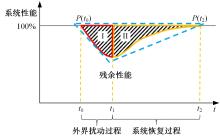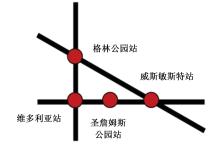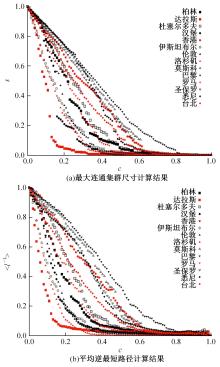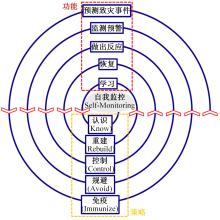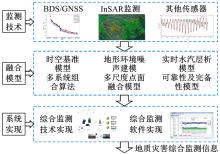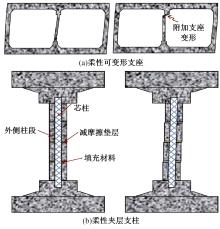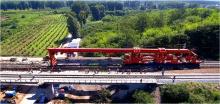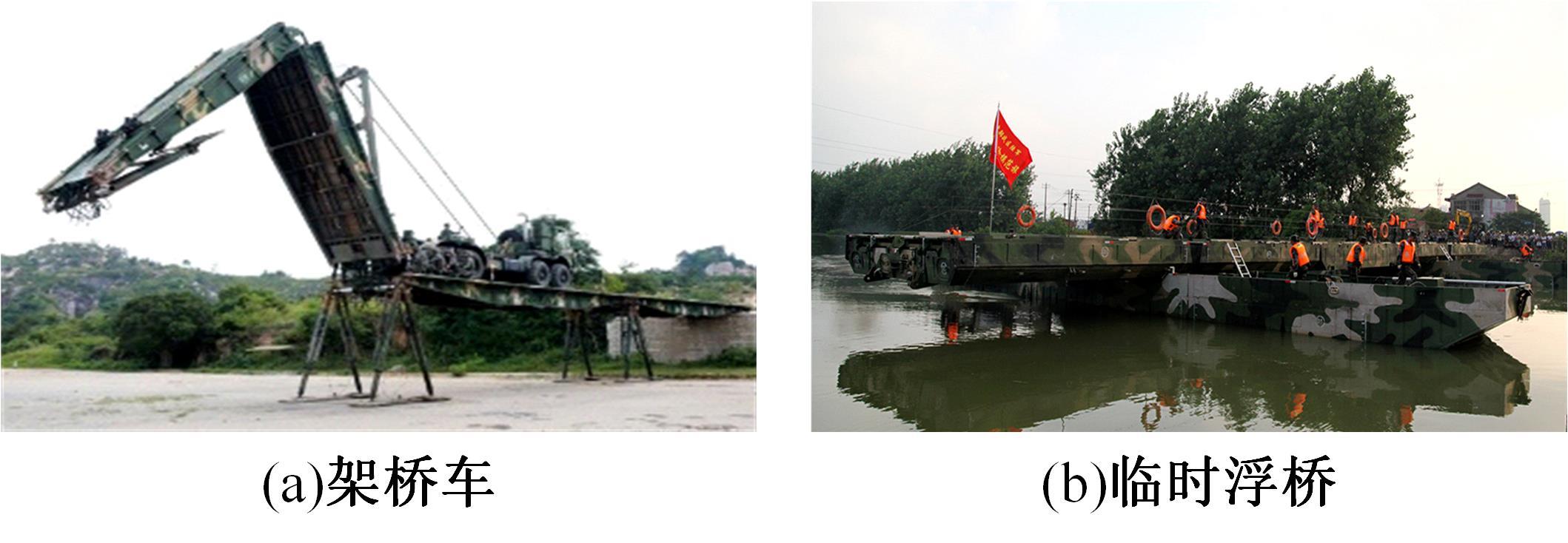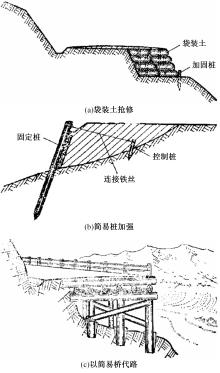吉林大学学报(工学版) ›› 2023, Vol. 53 ›› Issue (6): 1529-1549.doi: 10.13229/j.cnki.jdxbgxb.20221350
• 综述 •
道路交通基础设施韧性研究现状及展望
- 东南大学 交通学院,南京 211189
Status and prospects of highway transportation infrastructure resilience research
Xiao-ming HUANG( ),Run-min ZHAO
),Run-min ZHAO
- School of Transportation,Southeast University,Nanjing 211189,China
摘要:
自韧性概念被引入交通运输领域以来,韧性交通已经受到交通领域研究者的广泛关注。具有良好韧性的道路交通基础设施结构,能够有效应对自然、人为等各种灾害,进一步满足交通强国建设的高效交通和安全交通需求。为了明确国内外道路交通基础设施韧性的研究现状,本文从道路交通基础设施韧性的定义、度量方式、韧性提升技术等方面出发,综述了道路交通基础设施韧性研究成果,论述了未来道路交通基础设施韧性研究,尤其是韧性提升技术的发展方向和研究重点。分析表明,针对道路交通基础设施韧性的研究,主要集中在路网整体的交通网络组织规划层面,对于基础设施结构本体的韧性研究相对较为分散,缺乏统一全面的定义和度量标准。此外,在针对结构韧性的灾变破坏机理研究中,缺乏对全要素、结构系统间耦合等更为全面的研究认识,难以揭示灾变衍化的链式过程和突变特性。因此,对未来道路交通基础设施韧性的研究,应进一步揭示不同类型设施结构的灾变分析理论和方法,针对道路交通基础设施结构韧性建立全面统一的定义和度量标准,同时从预警监测、结构安全和韧性提升、柔性运行和灾后恢复等角度出发,形成并推广道路交通基础设施韧性提升的相关技术。
中图分类号:
- U411
| 1 | Zhou Y, Wang J, Yang H. Resilience of transportation systems: concepts and comprehensive review[J]. IEEE Transactions on Intelligent Transportation Systems, 2019, 20(12): 4262-4276. |
| 2 | 李军, 曾鹦, 李妍峰. 基于汶川地震的震后交通受损评估研究[J]. 管理评论, 2008, 20(12): 35-40. |
| Li Jun, Zeng Ying, Li Yan-feng. Study on the assessment of post-earthquake traffic damage based on Wenchuan earthquake[J]. Management Review, 2008, 20(12): 35-40. | |
| 3 | Faturechi R, Miller-Hooks E. Measuring the performance of transportation infrastructure systems in disasters: a comprehensive review[J]. Journal of Infrastructure Systems, 2015, 21(1): No.4014025. |
| 4 | Schrank D, Eisele B, Lomax T. TTI's 2012 urbanmobility report powered by INRIX traffic data[R].Austin: Texas Transportation Institute, 2012. |
| 5 | Holling C. Resilience and stability of ecological systems[J]. Annual Review of Ecology and Systematics, 1973, 4(1): 1-23. |
| 6 | Murray-Tuite M. A comparison of transportation network resilience under simulated system optimum and user equilibrium conditions[C]∥2006 Winter Simulation Conference, Monterey, USA, 2006: 1398-1405. |
| 7 | Alexander D E. Resilience and disaster risk reduction: an etymological journey[J]. Natural Hazards and Earth System Sciences, 2013, 13(11): 2707-2716. |
| 8 | Meng C. Transportation resilience: a summative review on definition and connotation[C]∥2015 International Conference on Automation, Mechanical Control and Computational Engineering, Jinan, China, 2015: 672-677. |
| 9 | Serulle N U, Heaslip K, Brady B, et al. Resiliency of transportation network of Santo Domingo, Dominican Republic case study[J]. Transportation Research Record, 2011, 2234: 22-30. |
| 10 | Cox A, Prager F, Rose A. Transportation security and the role of resilience: a foundation for operational metrics[J]. Transport Policy, 2011, 18(2): 307-317. |
| 11 | Omer M, Mostashari A, Nilchiani R, et al. A framework for assessing resiliency of maritime transportation systems[J]. Maritime Policy & Management, 2012, 39(7): 685-703. |
| 12 | Bhavathrathan B, Patil G. Quantifying resilience using a unique critical cost on road networks subject to recurring capacity disruptions[J]. Transportmetrica A: Transport Science, 2015, 11(9): 836-855. |
| 13 | 杨超, 唐鹏程, 郝旭宽, 等. 韧性交通建设实践与启示[J]. 综合运输, 2021, 43(8): 134-138. |
| Yang Chao, Tang Peng-cheng, Hao Xu-kuan, et al. The practice of the construction of resilient transportation infrustructures[J]. China Transportation Review, 2021, 43(8): 134-138. | |
| 14 | 王兴隆, 石宗北, 陈仔燕. 空中交通网络模体识别及子图结构韧性评估[J]. 航空学报, 2021, 42(7): 558-568. |
| Wang Xing-long, Shi Zong-bei, Chen Zi-yan. Air traffic network motif recognition and sub-graph structure resilience evaluation[J]. Acta Aeronautica, 2021, 42(7): 558-568. | |
| 15 | 吕彪, 高自强, 刘一骝. 道路交通系统韧性及路段重要度评估[J]. 交通运输系统工程与信息, 2020, 20(2): 114-121. |
| Lv Biao, Gao Zi-qiang, Liu Yi-liu. Evaluation of road transportation system resilience and link importance[J]. Journal of Transportation Systems Engineering and Information Technology, 2020, 20(2): 114-121. | |
| 16 | 马宝奎, 柴浩, 张志鹏. 后疫情时期城市轨道交通客流特征与韧性探讨[J]. 综合运输, 2022, 44(7): 75-80. |
| Ma Bao-kui, Chai Hao, Zhang Zhi-peng. Assessment and countermeasures for urban rail transit resilience governance in post-pandemic era[J]. China Transportation Review, 2022, 44(7): 75-80. | |
| 17 | Lounis Z, McAllister T. Risk-based decision making for sustainable and resilient infrastructure systems[J]. Journal of Structural Engineering, 2016, 142(9): No. F4016005. |
| 18 | Zimmerman R, Zhu Q, Leon F, et al. Conceptual modeling framework to integrate resilient and interdependent infrastructure in extreme weather[J]. Journal of Infrastructure Systems, 2017, 23(4): No. 4017034. |
| 19 | Bruneau M, Chang S, Eguchi R, et al. A Framework to quantitatively assess and enhance the seismic resilience of communities[J]. Earthquake Spectra, 2003, 19(4): 733-752. |
| 20 | 唐少虎, 朱伟, 程光, 等. 暴雨内涝下城市道路交通系统安全韧性评估[J]. 中国安全科学学报, 2022, 32(7): 143-150. |
| Tang Shao-hu, Zhu Wei, Cheng Guang, et al. Safety resilience assessment of urban road traffic system under rainstorm waterlogging[J]. China Safety Science Journal, 2022, 32(7): 143-150. | |
| 21 | Zhou Y, Wang J, Yang H. Resilience of transportation systems: concepts and comprehensive review[J]. IEEE Transactions on Intelligent Transportation Systems, 2019, 20(12): 4262-4276. |
| 22 | Chopra S S, Dillon T, Bilec M, et al. A network-based framework for assessing infrastructure resilience: a case study of the London metro system[J]. Journal of the Royal Society, Interface, 2016, 13(118): No. 20160113. |
| 23 | Berche B, Von-Ferber C, Holovatch T, et al. Resilience of public transport networks against attacks[J]. European Physical Journal B, 2009, 71(1): 125-137. |
| 24 | Ip W H, Wang D W. Resilience and friability of transportation networks: evaluation, analysis and optimization[J]. IEEE Systems Journal, 2011, 5(2): 189-198. |
| 25 | Testa A, Furtado M, Alipour A. Resilience of coastal transportation networks faced with extreme climatic events[J]. Transportation Research Record, 2015, 2532(1): 29-36. |
| 26 | Osei-Asamoah A, Lownes N. Complex network method of evaluating resilience in surface transportation networks[J]. Transportation Research Record, 2014, 2467(1): 120-128. |
| 27 | Hartmann A. Large-deviation properties of resilience of transportation networks[J]. The European Physical Journal B, 2014, 87(5): No.114. |
| 28 | Zhang X, Miller-Hooks E, Denny K. Assessing the role of network topology in transportation network resilience[J]. Journal of Transport Geography, 2015, 46: 35-45. |
| 29 | Aydin N, Duzgun H, Wenzel F, et al. Integration of stress testing with graph theory to assess the resilience of urban road networks under seismic hazards[J]. Natural Hazards, 2018, 91(1): 37-68. |
| 30 | Lima M, Medda F. A new measure of resilience: an application to the London underground[J]. Transportation Research Part A: Policy and Practice, 2015, 81: 35-46. |
| 31 | Wang Y, Liu H, Han K, et al. Day-to-day congestion pricing and network resilience[J]. Transportmetrica A: Transport Science, 2015, 11(9): 873-895. |
| 32 | Twumasi-Boakye R, Sobanjo J. Resilience of regional transportation networks subjected to hazard-induced bridge damages[J]. Journal of Transportation Engineering, Part A: Systems, 2018, 144(10): No. 4018062. |
| 33 | Adjetey-Bahun K, Birregah B, Châtelet E, et al. A model to quantify the resilience of mass railway transportation systems[J]. Reliability Engineering & System Safety, 2016, 153: 1-14. |
| 34 | Bocchini P, Frangopol D. Optimal resilience and cost-based post-disaster intervention prioritization for bridges along a highway segment[J]. Journal of Bridge Engineering, 2012, 17(1): 117-129. |
| 35 | Bocchini P, Frangopol D. Restoration of bridge networks after an earthquake: multicriteria intervention optimization[J]. Earthquake Spectra, 2012, 28(2): 427-455. |
| 36 | Chen L, Miller-Hooks E. Resilience: an indicator of recovery capability in intermodal freight transport[J]. Transportation Science, 2011, 46(1): 109-123. |
| 37 | Nair R, Avetisyan H, Miller-Hooks E. Resilience framework for ports and other intermodal components[J]. Transportation Research Record, 2010, 2166(1): 54-65. |
| 38 | Miller-Hooks E, Zhang X, Faturechi R. Measuring and maximizing resilience of freight transportation networks[J]. Computers & Operations Research, 2012, 39(7): 1633-1643. |
| 39 | Faturechi R, Levenberg E, Miller-Hooks E. Evaluating and optimizing resilience of airport pavement networks[J]. Computers & Operations Research, 2014, 43: 335-348. |
| 40 | Faturechi R, Miller-Hooks E. Travel time resilience of roadway networks under disaster[J]. Transportation Research Part B: Methodological, 2014, 70: 47-64. |
| 41 | Janić M. Modelling the resilience, friability and costs of an air transport network affected by a large-scale disruptive event[J]. Transportation Research Part A: Policy and Practice, 2015, 71: 1-16. |
| 42 | Vugrin E, Turnquist M, Brown N. Optimal recovery sequencing for enhanced resilience and service restoration in transportation networks[J]. International Journal of Critical Infrastructures, 2014, 10: 218-246. |
| 43 | Reed D A, Kapur K C, Christie R D. Methodology for assessing the resilience of networked infrastructure[J]. IEEE Systems Journal, 2009, 3(2): 174-180. |
| 44 | Frangopol D M, Bocchini P. Resilience as optimization criterion for the rehabilitation of bridges belonging to a transportation network subject to earthquake[C]∥2011 Structures Congress, Las Vegas, USA, 2011: 2044-2055. |
| 45 | Karamlou A, Bocchini P. Computation of bridge seismic fragility by large-scale simulation for probabilistic resilience analysis[J]. Earthquake Engineering & Structural Dynamics, 2015, 44: 1959-1978. |
| 46 | Karamlou A, Bocchini P. Sequencing algorithm with multiple-input genetic operators: application to disaster resilience[J]. Engineering Structures, 2016, 117: 591-602. |
| 47 | Huang H, Zhang D. Resilience analysis of shield tunnel lining under extreme surcharge: characterization and field application[J]. Tunnelling and Underground Space Technology, 2016, 51: 301-312. |
| 48 | Chan K, Wang Y. Resilient pavement design with consideration of flooding effect caused by climate change[J]. Transportmetrica A: Transport Science, 2020, 16(3): 1136-1155. |
| 49 | 郑刚, 程雪松, 周海祚, 等. 岩土与地下工程结构韧性评价与控制[J]. 土木工程学报, 2022, 55(7): 1-38. |
| Zheng Gang, Cheng Xue-song, Zhou Hai-zuo. Resilient evaluation and control in geotechnical and underground engineering[J]. China Civil Engineering Journal, 2022, 55(7): 1-38. | |
| 50 | Wachi K, Asano S, Maeda N, et al. Mechanical characteristics of simplified connection of pile head for precast concrete pile[J]. Journal of Structural and Construction Engineering (Transactions of AIJ), 2003, 68: 85-91. |
| 51 | Guo Z, He W, Bai X, et al. Seismic performance of pile-cap connections of prestressed high-strength concrete pile with different details[J]. Structural Engineering International, 2017, 27(4): 546-557. |
| 52 | Zhang J, Wang W, Jiang D, et al. Tests for aseismic performance of pile-to-pile cap joint of cast-in-place piles with steel casings[J]. Journal of Vibration and Shock, 2018, 37(3): 79-84. |
| 53 | Roeder C, Stringer S, Jellin A. Seismic performance of improved pile-to-wharf deck connections[J]. PCI Journal, 2013, 58: 62-80. |
| 54 | 方江华, 张志红, 张景钰. 人工冻结法在上海轨道交通四号线修复工程中的应用[J]. 土木工程学报, 2009, 42(8): 124-128. |
| Fang Jiang-hua, Zhang Zhi-hong, Zhang Jing-yu. Application of artificial freezing to recovering a collapsed tunnel in Shanghai metro No.4 line[J]. China Civil Engineering Journal, 2009, 42(8): 124-128. | |
| 55 | Zheng G, Yu X, Zhou H, et al. Stability analysis of stone column-supported and geosynthetic-reinforced embankments on soft ground[J]. Geotextiles and Geomembranes, 2020, 48(3): 349-356. |
| 56 | Lundberg J, Johansson B. Systemic resilience model[J]. Reliability Engineering & System Safety, 2015, 141: 22-32. |
| 57 | Tepecik-Diş A, Karimnia E. Reframing Kiruna's relocation—spatial production or a sustainable transformation[J]. Sustainability, 2021, 13(7): No.3811. |
| 58 | Phuong N, Hiroshi S. Disaster avoidance control against tsunami[C]∥2016 28th International Teletraffic Congress, Würzburg, Germany, 2016: 26-34. |
| 59 | Saba S, Ahsan F, Mohsin S. BAT-ANN based earthquake prediction for Pakistan region[J]. Soft Computing, 2017, 21(19): 5805-5813. |
| 60 | Preethi G, Santhi B. Study on techniques of earthquake prediction[J]. International Journal of Computer Applications, 2011, 29: 55-58. |
| 61 | Ramli A, Samad A, Ruslan F. A 3-hours river water level flood prediction model using NNARX with improves modelling strategy[C]∥2016 6th International Conference on System Engineering and Technology, Bandung, Indonesia, 2016: 23-27. |
| 62 | Yu B. Research on prediction of debris flows triggered in channels[J]. Natural Hazards, 2011, 58(1): 391-406. |
| 63 | 张精岳, 王志强. 大跨高墩刚构与低墩连续组合桥梁纵向抗震结构体系分析[J]. 公路, 2020, 65(8): 103-108. |
| Zhang Jing-yue, Wang Zhi-qiang. Analysis on longitudinal aseismic structure system of long span continuous composite bridge with high pier rigid frame and low pier[J]. Highway, 2020, 65(8): 103-108. | |
| 64 | Chen S, Li H, Guo L, et al. Testing the key performance of mobile flood protection system[J]. Advances in Civil Engineering, 2018, 2018: No. 5641385. |
| 65 | Hollnagel E. Resilience Engineering Perspectives[M]. London, UK: CRC Press, 2009. |
| 66 | Ai F, Comfort L, Dong Y, et al. A dynamic decision support system based on geographical information and mobile social networks: a model for tsunami risk mitigation in padang, indonesia[J]. Safety Science, 2016, 90: 62-74. |
| 67 | Van-Halsema D, Van-Der-Kooij M. Satellite radar measurements of land subsidence[C]∥1996 International Geoscience and Remote Sensing Symposium, Lincoln, NE, USA, 1996: 963-965. |
| 68 | Achache J, Fruneau B, Delacourt C. Applicability of SAR interferometry for monitoring of landslides[J/OL]. [2022-10-04]. |
| 69 | Zhang Q, Zhu W, Ding X, et al. Two-dimensional deformation monitoring over Qingxu (China) by integrating C-, L- and X-bands SAR images[J]. Remote Sensing Letters, 2014, 5: 27-36. |
| 70 | 马洪超, 姚春静, 张生德. 机载激光雷达在汶川地震应急响应中的若干关键问题探讨[J]. 遥感学报, 2008(6): 925-932. |
| Ma Hong-chao, Yao Chun-jing, Zhang Sheng-de. Some technical issues of airborne LIDAR system applied to Wenchuan earthquake relief works[J]. National Remote Sensing Bulletin, 2008(6): 925-932. | |
| 71 | 刘圣伟, 郭大海, 陈伟涛, 等. 机载激光雷达技术在长江三峡工程库区滑坡灾害调查和监测中的应用研究[J]. 中国地质, 2012, 39(2): 507-517. |
| Liu Sheng-wei, Guo Da-hai, Chen Wei-tao. The application of airborne lidar technology in landslide investigation and monitoring of Three Gorges Reservoir area[J]. Geology in China, 2012, 39(2): 507-517. | |
| 72 | 杨景玉. 基于高分遥感影像的道路灾害监测关键技术研究[D]. 兰州: 兰州交通大学电子与信息工程学院, 2019. |
| Yang Jing-yu. Research on key technologies of road disaster monitoring based on high-resolution remote sensing imagery[D]. Lanzhou: School of Electronic and Information Engineering, Lanzhou Jiaotong University, 2019. | |
| 73 | 张勤, 黄观文, 王利, 等. GPS在西安市地面沉降与地裂缝监测中的应用研究[J]. 工程地质学报, 2007(6): 828-833. |
| Zhang Qin, Huang Guan-wen, Wang Li, et al. GPS monitoring and surveying on land subsidence and land fissure in Xi'an city[J]. Journal of Engineering Geology, 2007(6): 828-833. | |
| 74 | 张勤, 黄观文, 杨成生. 地质灾害监测预警中的精密空间对地观测技术[J]. 测绘学报, 2017, 46(10): 1300-1307. |
| Zhang Qin, Huang Guan-wen, Yang Cheng-sheng. Precision space observation technique for geological hazard monitoring and early warning[J]. Acta Geodaetica et Cartographica Sinica, 2017, 46(10): 1300-1307. | |
| 75 | Roering J, Stimely L, Mackey B, et al. Using DInSAR, airborne LiDAR, and archival air photos to quantify landsliding and sediment transport[J/OL]. [2022-10-09]. |
| 76 | Chen R, Chang K, Angelier J,et al. Topographical changes revealed by high-resolution airborne LiDAR data: the 1999 Tsaoling landslide induced by the Chi–Chi earthquake[J]. Engineering Geology, 2006, 88(3): 160-172. |
| 77 | Ciampalini A, Raspini F, Frodella W, et al. The effectiveness of high-resolution LiDAR data combined with PSInSAR data in landslide study[J]. Landslides, 2016, 13(2): 399-410. |
| 78 | Zhang Z, He S, He C, et al. Research on highway slope disaster automated monitoring method based on video image processing[J]. Journal of Physics: Conference Series, 2021, 2095(1): No.12042. |
| 79 | Liu J, Lin C, Chen Y, et al. The source detection of 28 September 2018 Sulawesi tsunami by using ionospheric GNSS total electron content disturbance[J]. Geoscience Letters, 2020, 7: No. 11. |
| 80 | Ohta Y, Inoue T, Koshimura S, et al. Role of real-time GNSS in near-field tsunami forecasting[J]. Journal of Disaster Research, 2018, 13(3): 453-459. |
| 81 | Tsushima H, Hino R, Ohta Y, et al. tFISH/ R A P i D : rapid improvement of near-field tsunami forecasting based on offshore tsunami data by incorporating onshore GNSS data[J]. Geophysical Research Letters, 2014, 41(10): 3390-3397. |
| 82 | Nipa T, Kermanshachi S, Subramanya K. Development of innovative strategies to enhance the resilience of the critical infrastructure[C]∥Construction Research Congress 2022, Arlington, USA, 2022: 111-120. |
| 83 | Zhang W, Wang N. Resilience-based risk mitigation for road networks[J]. Structural Safety, 2016, 62: 57-65. |
| 84 | Dixit V, Verma P, Tiwari M. Assessment of pre and post-disaster supply chain resilience based on network structural parameters with CVaR as a risk measure[J]. International Journal of Production Economics, 2020, 227: No. 107655. |
| 85 | Huang Y, Dai H. Multiplex conductance and gossip based information spreading in multiplex networks[J]. IEEE Transactions on Network Science and Engineering, 2019, 6(3): 391-401. |
| 86 | Oliveira I, Carpi L, Atman A. The multiplex efficiency index: unveiling the Brazilian air transportation multiplex network—BATMN[J]. Scientific Reports, 2020, 10(1): No.13339. |
| 87 | Tang L, Jing K, He J, et al. Complex interdependent supply chain networks: cascading failure and robustness[J]. Physica A: Statistical Mechanics and its Applications, 2016, 443: 58-69. |
| 88 | Nguyen D, Shen Y, Thai M. Detecting critical nodes in interdependent power networks for vulnerability assessment[J]. IEEE Transactions on Smart Grid, 2013, 4(1): 151-159. |
| 89 | Fan B, Zheng C, Tang L, et al. Critical nodes identification for vulnerability analysis of power communication networks[J]. IET Communications, 2020, 14(4): 703-713. |
| 90 | Cao X, Hong C, Du W, et al. Improving the network robustness against cascading failures by adding links[J]. Chaos, Solitons & Fractals, 2013, 57: 35-40. |
| 91 | Beygelzimer A, Grinstein G, Linsker R, et al. Improving network robustness by edge modification[J]. Physica A: Statistical Mechanics and its Applications, 2005, 357(3): 593-612. |
| 92 | Wang X, Cao J, Li R, et al. A preferential attachment strategy for connectivity link addition strategy in improving the robustness of interdependent networks[J]. Physica A: Statistical Mechanics and its Applications, 2017, 483: 412-422. |
| 93 | Fan D, Sun B, Dui H, et al. A modified connectivity link addition strategy to improve the resilience of multiplex networks against attacks[J]. Reliability Engineering & System Safety, 2022, 221: No. 108294. |
| 94 | 吕西林, 陈聪. 带有可更换构件的结构体系研究进展[J]. 地震工程与工程振动, 2014, 34(1): 27-36. |
| Lv Xi-lin, Chen Cong. Research progress in structural systems with replaceable members[J]. Earthquake Engineering and Engineering Dynamics, 2014, 34(1): 27-36. | |
| 95 | 周颖, 吴浩, 顾安琪. 地震工程:从抗震、减隔震到可恢复性[J]. 工程力学, 2019, 36(6): 1-12. |
| Zhou Ying, Wu Hao, Gu An-qi. Earthquake engineering: from earthquake resilience, energy dissipation, and isolation, to resilience[J]. Engineering Mechanics, 2019, 36(6): 1-12. | |
| 96 | Zhang D, Zhai W, Huang H, et al. Robust retrofitting design for rehabilitation of segmental tunnel linings: using the example of steel plates[J]. Tunnelling and Underground Space Technology, 2019, 83: 231-242. |
| 97 | 吕西林, 陈云, 毛苑君. 结构抗震设计的新概念——可恢复功能结构[J]. 同济大学学报:自然科学版, 2011, 39(7): 941-948. |
| Lv Xi-lin, Chen Yun, Mao Yuan-jun. New concept of structural seismic design: earthquake resilience structures[J]. Journal of Tongji University (Natural Science), 2011, 39(7): 941-948. | |
| 98 | Anastasopoulos I, Gazetas G, Loli M, et al. Soil failure can be used for seismic protection of structures[J]. Bulletin of Earthquake Engineering, 2010, 8(2): 309-326. |
| 99 | 路德春, 马超, 杜修力, 等. 城市地下结构抗震韧性研究进展[J]. 中国科学: 技术科学: 1-15. |
| Lu De-chun, Ma Chao, Du Xiu-li, et al. Earthquake resilience of urban underground structures: state of the art[J]. Scientia Sinica (Technologica): 1-15. | |
| 100 | Lu D, Wu C, Ma C, et al. A novel segmental cored column for upgrading the seismic performance of underground frame structures[J]. Soil Dynamics and Earthquake Engineering, 2020, 131: No. 106011. |
| 101 | 郑刚, 朱晓蔚, 程雪松, 等. 悬臂排桩支护基坑连续破坏控制理论及设计方法研究[J]. 岩土工程学报, 2021, 43(6): 981-990. |
| Zheng Gang, Zhu Xiao-wei, Cheng Xue-song, et al. Study on the control theory and design method of progressive collapse in excavations retained by cantilever piles[J]. Chinese Journal of Geotechnical Engineering, 2021, 43(6): 981-990. | |
| 102 | Chen J, Li L, Xue J, et al. Failure mechanism of geosynthetic-encased stone columns in soft soils under embankment[J]. Geotextiles and Geomembranes, 2015, 43(5): 424-431. |
| 103 | 赵明华, 刘猛, 马缤辉, 等. 路堤下“土工格室+碎石桩”双向增强复合地基桩土应力比及沉降计算[J]. 中国公路学报, 2016, 29(5): 1-10. |
| Zhao Ming-hua, Liu Meng, Ma Bin-hui, et al. Calculation for stress concentration ratio and settlement of bidirectional reinforced composite foundation consisting of geocell mattress and stone column under embankment[J]. China Journal of Highway and Transport, 2016, 29(5): 1-10. | |
| 104 | Broms B. Stabilization of Soil with Lime Columns[M]. Boston, MA: Springer US, 1991: 833-855. |
| 105 | Jamsawang P, Voottipruex P, Boathong P, et al. Three-dimensional numerical investigation on lateral movement and factor of safety of slopes stabilized with deep cement mixing column rows[J]. Engineering Geology, 2015, 188: 159-167. |
| 106 | Irohara T, Kuo Y, Leung J. From preparedness to recovery: a tri-level programming model for disaster relief planning[C]∥4th International Conference on Computational Logistics, Copenhagen, Denmark, 2013: 213–228. |
| 107 | Akkihal A. Inventory pre-positioning for humanitarian operations[D]. Cambridge, MA: Massachusetts Institute of Technology, Engineering Systems Division, 2006. |
| 108 | Rawls C, Turnquist M. Pre-positioning of emergency supplies for disaster response[J]. Transportation Research Part B: Methodological, 2010, 44(4): 521-534. |
| 109 | Soltani-Sobh A, Heaslip K, Scarlatos P, et al. Reliability based pre-positioning of recovery centers for resilient transportation infrastructure[J]. International Journal of Disaster Risk Reduction, 2016, 19: 324-333. |
| 110 | 张耀辉, 陈士通, 徐光兴, 等. 铁路高墩换架梁技术方案研究[J]. 国防交通工程与技术, 2014, 12(5): 29-32. |
| Zhang Yao-hui, Chen Shi-tong, Xu Guang-xing, et al. A study of the beam-replacing techniques for the railway bridge with tall piers[J]. Traffic Engineering and Technology for National Defence, 2014, 12(5): 29-32. | |
| 111 | 张耀辉, 徐光兴. 京广线“百孔大桥”既有梁的整孔换架施工[J]. 铁道建筑, 2004(3): 17-19. |
| Zhang Yao-hui, Xu Guang-xing. Construction of the whole existing beam replacement of "Baikong Bridge" on the Beijing-Guangzhou line[J]. Railway Engineering, 2004(3): 17-19. | |
| 112 | Sun Z, Li H, Bi K, et al. Rapid repair techniques for severely earthquake-damaged circular bridge piers with flexural failure mode[J]. Earthquake Engineering and Engineering Vibration, 2017, 16(2): 415-433. |
| 113 | 曾兴贵, 徐鑫城, 巫文君, 等. 基于二次刚度的新型桥墩快速修复加固方法研究[J]. 福州大学学报:自然科学版, 2013, 41(4): 562-569. |
| Zeng Xing-gui, Xu Xin-cheng, Wu Wen-jun, et al. Study on the rapid repair and reinforcement methods for a novel bridge pier with post-yield stiffness[J]. Journal of Fuzhou University (Natural Science Edition), 2013, 41(4): 562-569. | |
| 114 | Zhang D, Li N, Li Z, et al. Rapid repair of RC bridge columns with prestressed stainless-steel hoops and stainless-steel jackets[J]. Journal of Constructional Steel Research, 2021, 177: No. 106441. |
| 115 | 李子运. 山区公路路基塌方快速修复新技术研究[D]: 重庆:重庆大学土木工程学院, 2013. |
| Li Zi-yun. Study on quick recovery technique of mountain highway subgrade collapsing[D]. Chongqing: School of Civil Engineering, Chongqing University, 2013. | |
| 116 | 吴树威. 山区公路路基崩塌灾害快速修复技术研究[D]. 重庆:重庆交通大学土木工程学院, 2018. |
| Wu Shu-wei. Study on rapid restoration technology of roadbed collapse disaster in mountain area[D]. Chongqing: School of Civil Engineering, Chongqing Jiaotong University, 2018. | |
| 117 | Guan Y, Gao Y, Sun R, et al. Experimental study and field application of calcium sulfoaluminate cement for rapid repair of concrete pavements[J]. Frontiers of Structural and Civil Engineering, 2017, 11(3): 338-345. |
| 118 | 孙佳龙, 黄煜镔, 范英儒, 等. 磷酸镁水泥用作道路的快速修补材料研究[J]. 功能材料, 2018, 49(1): 1040-1043. |
| Sun Jia-long, Huang Yu-bin, Fan Ying-ru, et al. Magnesium phosphate cement as rapid road repair material[J]. Journal of Functional Materials, 2018, 49(1): 1040-1043. | |
| 119 | Yang Q, Zhu B, Wu X. Characteristics and durability test of magnesium phosphate cement-based material for rapid repair of concrete[J]. Materials and Structures, 2000, 33(4): 229-234. |
| 120 | Ding Z. Research of magnesium phosphosilicate cement[D]. Hong Kong: School of Civil Engineering, Hong Kong University of Science and Technology, 2005. |
| 121 | 汪宏涛. 高性能磷酸镁水泥基材料研究[D]. 重庆:重庆大学材料科学与工程学院, 2006. |
| Wang Hong-tao. Study on the high performance magnesia-phosphate cement based composites[D]. Chongqing: College of Materials Science and Engineering, Chongqing University, 2006. | |
| 122 | 杨楠. 磷酸镁水泥基材料粘结性能研究[D]: 长沙:湖南大学土木工程学院, 2014. |
| Yang Nan. Research on the bonding properties of magnesium phosphate cement-based materials[D]. Changsha: College of Civil Engineering, Hunan University, 2014. | |
| 123 | 李宗典, 刘世益, 尹立杰. 铁路路基道碴囊及路基空洞注浆加固治理[J]. 路基工程, 2007(6): 179-180. |
| Li Zong-dian, Liu Shi-yi, Yin Li-jie. Reinforcement and treatment of ballast bag and subgrade cavity grouting[J]. Subgrade Engineering, 2007(6): 179-180. | |
| 124 | 吕续臣, 于立俊. 既有铁路路基注浆加固技术[J]. 铁道建筑, 2006(4): 39-41. |
| Lv Xu-chen, Yu Li-jun. Existing railway subgrade grouting reinforcement technology[J]. Railway Engineering, 2006(4): 39-41. | |
| 125 | 孙冬冬. 道床填料循环累积变形与铁路沉降修复试验研究[D]. 杭州:浙江大学建筑工程学院, 2017. |
| Sun Dong-dong. Experimental study on cycle cumulative rehabilitation of railway settlement[D]. Hangzhou: College of Civil Engineering and Architecture, Zhejiang University, 2017. |
| [1] | 杨柳,王创业,王梦言,程阳. 设置自动驾驶小客车专用车道的六车道高速公路交通流特性[J]. 吉林大学学报(工学版), 2023, 53(7): 2043-2052. |
| [2] | 周正峰,于晓涛,陶雅乐,郑茂,颜川奇. 基于灰色关联分析的树脂与弹性体高黏沥青高温性能评价[J]. 吉林大学学报(工学版), 2023, 53(7): 2078-2088. |
| [3] | 马涛,马源,黄晓明. 基于多元非线性回归的智能压实关键参数最优解[J]. 吉林大学学报(工学版), 2023, 53(7): 2067-2077. |
| [4] | 魏海斌,韩栓业,毕海鹏,刘琼辉,马子鹏. 智能感知道路主动除冰雪系统及实验技术[J]. 吉林大学学报(工学版), 2023, 53(5): 1411-1417. |
| [5] | 郑睢宁,何锐,路天宇,徐紫祎,陈华鑫. RET/胶粉复合改性沥青制备及其混合料性能评价[J]. 吉林大学学报(工学版), 2023, 53(5): 1381-1389. |
| [6] | 关博文,邸文锦,王发平,吴佳育,张硕文,贾治勋. 干湿循环与交变荷载作用下混凝土硫酸盐侵蚀损伤[J]. 吉林大学学报(工学版), 2023, 53(4): 1112-1121. |
| [7] | 杨帆,李琛琛,李盛,刘海伦. 温缩作用下双层连续配筋混凝土路面配筋率设计参数对比分析[J]. 吉林大学学报(工学版), 2023, 53(4): 1122-1132. |
| [8] | 魏海斌,马子鹏,毕海鹏,刘汉涛,韩栓业. 基于力学响应分析方法的导电橡胶复合路面铺装技术[J]. 吉林大学学报(工学版), 2023, 53(2): 531-537. |
| [9] | 刘状壮,张有为,季鹏宇,Abshir Ismail Yusuf,李林,郝亚真. 电热型融雪沥青路面传热特性研究[J]. 吉林大学学报(工学版), 2023, 53(2): 523-530. |
| [10] | 时爽,林岚钦,马涛,顾临皓,张燕宁. 基于分子动力学的生物质透层油稳定性[J]. 吉林大学学报(工学版), 2023, 53(1): 197-209. |
| [11] | 刘聂玚子,荣鑫,刘洪海,边庆华,兰海. 沥青混合料的搅拌功率试验和黏度模型[J]. 吉林大学学报(工学版), 2023, 53(1): 220-225. |
| [12] | 陈栩,曹超飞,尚静,黄明星,艾长发,任东亚. 动静水环境作用下级配离析对沥青混合料水损害的影响评价[J]. 吉林大学学报(工学版), 2023, 53(1): 210-219. |
| [13] | 彭勇,章秀芳,郭泽宇,陆学元,李彦伟. 离散元法分析集料接触特性对沥青混合料剪切疲劳寿命的影响[J]. 吉林大学学报(工学版), 2023, 53(1): 178-187. |
| [14] | 孙雅珍,郑直,黄伟明,王金昌. 基于状态空间法的含裂缝水泥路面结构分析[J]. 吉林大学学报(工学版), 2023, 53(1): 188-196. |
| [15] | 时成林,王勇,吴春利,宋文祝. 路堤挡土墙主动土压力计算方法修正[J]. 吉林大学学报(工学版), 2022, 52(6): 1394-1403. |
|
||
